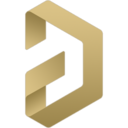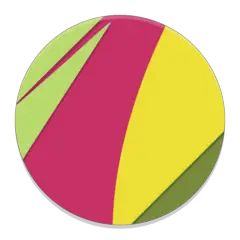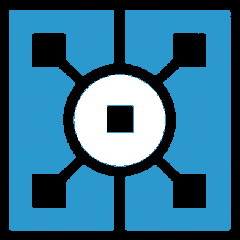|
|
Clear the filter that is currently being applied to the active document |
||
|
|
Cycle through the available single layer viewing modes |
||
|
The available modes are determined by enabling the corresponding options in the Available Single Layer Modes region on the PCB Editor - Board Insight Display page of the Preferences dialog.
|
|||
|
|
Switch to the next enabled layer |
||
|
|
Switch to the previous enabled layer |
||
|
|
Switch to the next enabled signal layer |
||
|
|
Switch to the previous enabled signal layer |
||
|
|
Delete a single, selected end-of-route object (component-free track, arc, via, or pad). The singular routing object connected to the deleted object will be automatically selected and ready for subsequent deletion. |
||
|
Note: By using the command repeatedly, you are able to incrementally unwind the routed path in the same way as using the Backspace shortcut while interactively routing.
|
|||
|
|
Delete one or more selected routing objects (component-free tracks, arcs, vias, and pads) on the current document. All routing objects connected to those deleted will be automatically selected and ready for subsequent deletion |
||
|
Note: By using the command repeatedly, you are able to incrementally unwind the routed path in both directions.
|
|||
|
|
Add a new comment thread to a defined area of the active document. Before you can start using the comment feature, ensure that you have opened (checked out) a Managed Project and are working on its PCB document |
||
|
|
Add a new comment thread to a specified point in the active document. Before you can start using the comment feature, ensure that you have opened (checked out) a Managed Project and are working on its PCB document |
||
|
|
Add a new comment thread to a selected component in the active document. Before you can start using the comment feature, ensure that you have opened (checked out) a Managed Project and are working on its PCB document |
||
Publicité
|
Note: Shortcuts available will depend on the interactive command and the specific design object that is the focus of that command.
|
|||
|
|
Access the Graphical Editing Hot key List dialog that provides a listing of the shortcuts available (but that cannot be launched) as well as access to the documentation for the currently running command |
||
|
|
Access a menu that lists all valid shortcuts for the present stage of the currently running interactive command |
||
|
|
Acts like a Click of the mouse when placing/moving an object |
||
|
|
Zoom in |
||
|
|
Zoom out |
||
|
|
Refresh the screen |
||
|
|
Change display to have the cursor (with the attached object being placed/moved) at the center of the design window |
||
|
|
Move the cursor (with the attached object being placed/moved) to the left in the current document workspace in increments of one snap grid unit |
||
|
|
Move the cursor (with the attached object being placed/moved) to the left in the current document workspace in increments of 10 snap grid units |
||
|
|
Move the cursor (with the attached object being placed/moved) to the right in the current document workspace in increments of one snap grid unit |
||
|
|
Move the cursor (with the attached object being placed/moved) to the right in the current document workspace in increments of 10 snap grid units |
||
|
|
Move the cursor (with the attached object being placed/moved) upwards in the current document workspace in increments of one snap grid unit |
||
|
|
Move the cursor (with the attached object being placed/moved) upwards in the current document workspace in increments of 10 snap grid units |
||
|
|
Move the cursor (with the attached object being placed/moved) downwards in the current document workspace in increments of one snap grid unit |
||
|
|
Move the cursor (with the attached object being placed/moved) downwards in the current document workspace in increments of 10 snap grid units |
||
|
|
Access the associated mode of the Properties panel in which properties for the object being placed/moved can be changed on-the-fly |
||
|
|
Mirror the object being placed/moved along the X-axis |
||
|
|
Mirror the object being placed/moved along the Y-axis |
||
|
|
Flip the object being placed/moved to the other side of the board |
||
|
|
Constrain the direction of movement to the horizontal or vertical axis depending on the initial direction of movement |
||
|
|
When auto-panning while placing/moving an object, use to pan at higher speed |
||
|
|
Switch to the next enabled layer |
||
|
|
Switch to the previous enabled layer |
||
|
|
Switch to the next enabled signal layer |
||
|
|
Switch to the previous enabled signal layer |
||
|
|
Escape from the current process - either a stage of the currently running interactive command or the command itself |
||
|
|
Rotates the object being placed/moved counterclockwise. Rotation is in accordance with the value for the Rotation Step defined on the PCB Editor – General page of the Preferences dialog |
||
|
|
Rotates the object being placed/moved clockwise. Rotation is in accordance with the value for the Rotation Step defined on the PCB Editor – General page of the Preferences dialog |
||
|
|
Toggle the display of the connection lines (ratsnest) while moving a component |
||
|
|
(hold) When moving a component to view dynamic alignment guides (green indicator lines) in relation to the boundaries of this and nearby components |
||
|
|
(hold) When moving a component to view dynamic alignment guides (green indicator lines) in relation to the pads of this and nearby components |
||
|
|
When moving a component to cycle through component conflict resolution modes (Ignore Obstacles, Push Obstacles, Avoid Obstacles) |
||
| + |
On a via in a stack of vias, use to move the entire stack to a new location |
||
|
|
On a selected object, opens the Get X-Y Offsets dialog to move one or more currently selected objects by a specified distance in the horizontal (X) and/or vertical (Y) planes. |
||
|
|
On a via in a stack of vias, use to move just that via to a new location (and not the entire stack) |
||
|
Note: Following additional shortcuts relate to placing/editing polygonal-shaped objects - Polygon Pour, Region, Coverlay Polygon, Polygonal Room, Extruded 3D Body, Board Shape.
|
|||
|
|
Cycle through the five available corner modes (45 degree, 45 degree with arc, 90 degree, 90 degree with arc, and Any Angle) when placing a polygonal-based object |
||
|
|
Toggle between corner direction sub-modes (for the relevant corner modes) when placing a polygonal-based object |
||
|
|
Reduce the radius of the arc (by 1mil/0.025mm increments) when in arc cornering placement mode |
||
|
|
Reduce the radius of the arc (by 10mil/0.254mm increments) when in arc cornering placement mode |
||
|
|
Increase the radius of the arc (by 1mil/0.025mm increments) when in arc cornering placement mode |
||
|
|
Increase the radius of the arc (by 10mil/0.254mm increments) when in arc cornering placement mode |
||
Publicité |
|||
|
|
(hold) Anywhere along an edge of a selected polygonal-based object away from editing handles to insert a new end vertex |
||
|
+ |
(hold left mouse button, then press Delete) On an end vertex of a selected polygonal-based object, use to remove that vertex |
||
|
|
Remove the last placed vertex |
||
|
|
Access the Interactive Routing mode of the Properties panel in which you can change routing preferences on-the-fly, as well as modify properties of the track being placed |
||
|
|
Cycle through the five available corner modes (45 degree, 45 degree with arc, 90 degree, 90 degree with arc, and Any Angle) |
||
|
Note: If the Restrict To 90/45 option is enabled on the PCB Editor - Interactive Routing page of the Preferences dialog, the arc cornering modes and the Any Angle mode will not be available.
|
|||
|
|
Toggle between corner direction sub-modes (for the relevant corner modes) |
||
|
|
Reduce the radius of the arc (by 1mil/0.025mm increments) when in arc cornering placement mode |
||
|
|
Reduce the radius of the arc (by 10mil/0.254mm increments) when in arc cornering placement mode |
||
|
|
Increase the radius of the arc (by 1mil/0.025mm increments) when in arc cornering placement mode |
||
|
|
Increase the radius of the arc (by 10mil/0.254mm increments) when in arc cornering placement mode |
||
|
Commits the routing up to the current cursor position and places the tracks |
|||
|
ou
|
|||
|
|
Unwinds the last committed route back to its starting point. If any objects had been pushed through placing the last segment, they are moved back to their original positions |
||
|
|
Terminates the current route. Any routing that has been committed before calling the termination is retained |
||
|
|
Auto-complete segments to target |
||
|
|
Toggle Look-Ahead placement mode on/off |
||
|
|
Cycle through the currently enabled routing conflict resolution modes. The modes available (including Walkaround Obstacles, Push Obstacles, Ignore Obstacles, Hug and Push Obstacles, AutoRoute Current Layer, AutoRoute MultiLayer, and Stop at First Obstacle) can be defined on the PCB Editor - Interactive Routing page of the Preferences dialog and modified on-the-fly (press Tab to access the Interactive Routing mode of the Properties panel) |
||
|
|
Toggle Follow Mouse Trail mode |
||
|
|
Toggle automatic loop removal feature on/off |
||
|
|
Toggle the display of clearance boundaries |
||
|
|
Use to improve the quality of the selected routes by reducing the overall length and number of corners |
||
|
|
Choose the required track width from available predefined favorite routing widths in the Track mode of the Properties panel |
||
|
|
Choose the required via size from available predefined via sizes, sourced from one or more associated via templates using the Choose Via Sizes dialog |
||
|
|
Cycle through routing width sources (User Choice --> Rule Minimum --> Rule Preferred --> Rule Maximum) |
||
|
With User Choice, routing widths are defined and managed in the Favorite Interactive Routing Widths dialog.
|
|||
|
|
Cycle through via size sources (User Choice --> Rule Minimum --> Rule Preferred --> Rule Maximum) |
||
|
With User Choice, via sizes are defined through via templates - locally to the active PCB document or through associated Pad Via libraries (*.PvLib).
|
|||
|
|
Switch to the next enabled (and rule-permitted) layer, dropping a via |
||
|
|
Switch to the previous enabled (and rule-permitted) layer, dropping a via |
||
|
|
Switch to the next enabled (and rule-permitted) signal layer, dropping a via |
||
|
|
Switch to routing on the corresponding routing (signal) layer (dropping a via to do so). The number can be obtained from the prefix to the layer name ([n]), on the layer tab at the bottom of the main workspace. Alternatively, the number can be acquired from the pop-up window accessed through the Ctrl + L shortcut. |
||
|
|
Access a pop-up window of available routing layers. Click an entry to switch to that layer (dropping a via to do so). The number to the right of each entry ([n]) can be used to switch to that layer directly, without popping this window. |
||
|
|
When routing from a multi-layer pad or via, switches the layer for the current connection to the next signal layer defined for that pad/via |
||
|
Note: This feature works only when the routing is started from the pad/via and before the first segment is committed.
|
|||
|
|
Add fanout via; tool immediately waits for next fanout to route and via to place |
||
|
|
Add a via without changing layer |
||
|
|
Change routing via start/end layers |
||
|
|
Cycles through the connections available for routing if the current pad has multiple connections |
||
|
|
Switches the cursor position from the currently selected pad or track to the target pad or track. If the location of the object being switched to is not in the current window, the view jumps and centers around the new cursor position |
||
|
|
Enable subnet swapping |
||
|
Note: If no swappable target subnets are available, a message to this effect will be presented in the Messages panel.
|
|||
|
|
Swap target subnet - cycles through all swappable target subnets |
||
|
While interactively routing, you can enter LEGACY length tuning mode by using the Shift (plus) A shortcut. The following additional shortcuts are available within that mode:
|
|||
|
|
End the accordion |
||
|
|
Toggle display of the length tuning gauge on/off |
||
|
Commits the routing up to the current cursor position and places the tracks |
|||
|
ou
|
|||
|
|
Remove last segment or accordion |
||
|
|
Terminate current route. Any routing that has been committed before calling the termination is retained |
||
|
|
Cycle through the currently enabled routing conflict resolution modes. The modes available (including Walkaround Obstacles, Push Obstacles, Hug and Push Obstacles, Ignore obstacles, and Stop at First Obstacle) can be defined on the PCB Editor - Interactive Routing page of the Preferences dialog. |
||
|
|
Choose the required track width from available predefined favorite routing widths in the Favorite Interactive Routing Widths dialog |
||
|
|
Access the Ineractive Routing mode of the Properties panel in which you can define the approach used for defining the target length and to modify properties of the interactive routing on-the-fly |
||
|
|
Decrease the amplitude of the accordion pattern by the amount defined for the Amplitude Increment in the Accordion mode of the Properties panel |
||
|
|
Increase the amplitude of the accordion pattern by the amount defined for the Amplitude Increment in the Accordion mode of the Properties panel |
||
|
|
Decrease the corner (miter) radius (when using the Mitered with Lines or Mitered with Arcs accordion patterns) |
||
|
|
Increase the corner (miter) radius (when using the Mitered with Lines or Mitered with Arcs accordion patterns) |
||
|
|
Decrease the gap (pitch) for the accordion pattern by the amount defined for the Gap Increment in the Accordion mode of the Properties panel |
||
|
|
Increase the gap (pitch) for the accordion pattern by the amount defined for the Gap Increment in the Accordion mode of the Properties panel |
||
|
|
Cycle forward through the supported tuning patterns. Available patterns are: Mitered with Lines, Mitered with Arcs, and Rounded |
||
|
|
Cycle backward through the supported tuning patterns. Available patterns are: Mitered with Lines, Mitered with Arcs, and Rounded |
||
|
|
Toggle Amplitude Direction (starting direction) for the accordion pattern |
||
|
|
Cycle through the routing corner styles |
||
|
|
Enter the desired bus routing |
||
|
|
Access the Differential Pair Routing mode of the Properties panel from where you can change routing preferences on-the-fly, as well as modify properties of the track being placed |
||
|
|
Cycle through the four available corner modes (45 degree, 45 degree with arc, 90 degree, 90 degree with arc) |
||
|
Note: If the Restrict To 90/45 option is enabled, on the PCB Editor - Interactive Routing page of the Preferences dialog, the arc cornering modes will not be available.
|
|||
|
|
Toggle between corner direction sub-modes (for the relevant corner modes) |
||
|
|
Reduce the radius of the arc (by 1mil/0.025mm increments) when in arc cornering placement mode |
||
|
|
Reduce the radius of the arc (by 10mil/0.254mm increments) when in arc cornering placement mode |
||
|
|
Increase the radius of the arc (by 1mil/0.025mm increments) when in arc cornering placement mode |
||
|
|
Increase the radius of the arc (by 10mil/0.254mm increments) when in arc cornering placement mode |
||
|
Commits the routing up to the current cursor position and places the tracks |
|||
|
ou
|
|||
|
|
Remove last segment |
||
|
|
Terminate current route. Any routing that has been committed before calling the termination is retained |
||
|
|
Cycle through the currently enabled routing conflict resolution modes. The modes available (including Walkaround Obstacles, Push Obstacles, Hug and Push Obstacles, Ignore obstacles, and Stop at First Obstacle) can be defined on the PCB Editor - Interactive Routing page of the Preferences dialog, and modified on-the-fly (press Tab to access the Differential Pair Routing mode of the Properties panel) |
||
|
Note: When interactively routing differential pairs, the AutoRoute On Current Layer and AutoRoute On Multiple Layers modes are not available.
|
|||
|
|
During sliding, use to cycle through the three modes (45 Degree, Mixed, and Rounded). |
||
|
|
Toggle automatic loop removal feature on/off |
||
|
|
Toggle the display of clearance boundaries |
||
|
|
Choose the required track width from available predefined favorite routing widths in the Track mode of the Properties panel |
||
|
|
Choose the required via size from available predefined via sizes, sourced from one or more associated via templates. The Choose Via Sizes dialog will appear with which to do so |
||
|
|
Cycle through routing width sources (User Choice --> Rule Minimum --> Rule Preferred --> Rule Maximum) |
||
|
Note: With User Choice, routing widths are defined and managed in the Favorite Interactive Routing Widths dialog. The rule-based values come from the applicable Differential Pairs Routing rule.
|
|||
|
|
Cycle through via size sources (User Choice --> Rule Minimum --> Rule Preferred --> Rule Maximum) |
||
|
Note: With User Choice, via sizes are defined through via templates - locally to the active PCB document, or through associated Pad Via libraries (*.PvLib).
|
|||
|
|
Cycle through available via patterns (aligned or staggered) |
||
|
|
Cycle through the defined Gap values available for the differential pair being routed, through the applicable Differential Pairs Routing rule (Min Gap --> Preferred Gap --> Max Gap) |
||






Quel est votre raccourci clavier préféré Altium Designer Avez-vous des conseils utiles pour le programme ? Faire savoir aux autres.
1044117 62
471724 4
392085 15
319443 4
270833
257584 3
Il y a 11 heures Mis à jour !
Il y a 11 heures Mis à jour !
Il y a 11 heures
Il y a 12 heures Mis à jour !
Il y a 13 heures
Il y a 3 jours
En son yazılar
How to delete a stubborn folder ending with space
When did WASD keys become standard?
How I solved Windows not shutting down problem
How to delete YouTube Shorts on desktop
I tried Google Play Games Beta